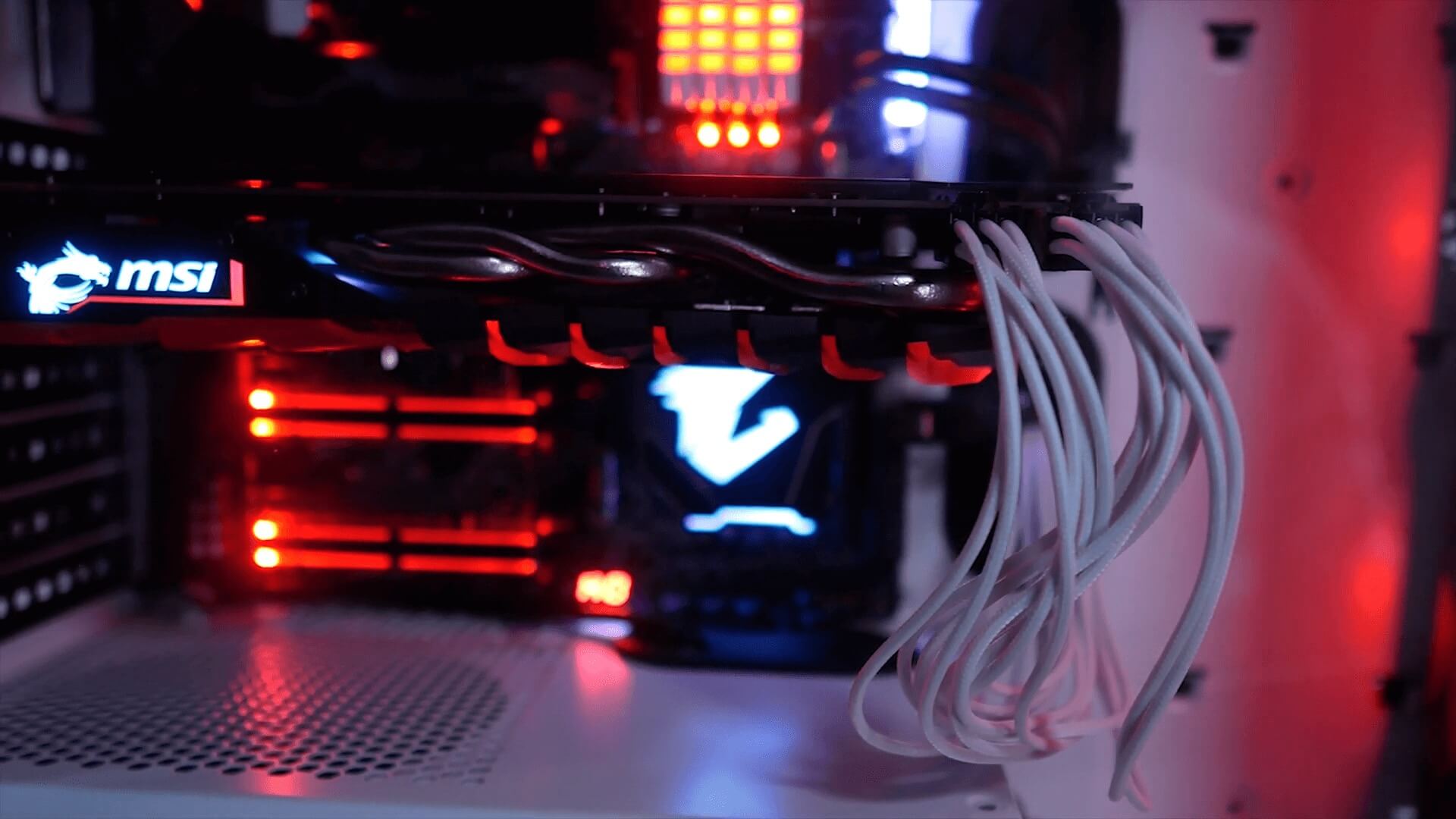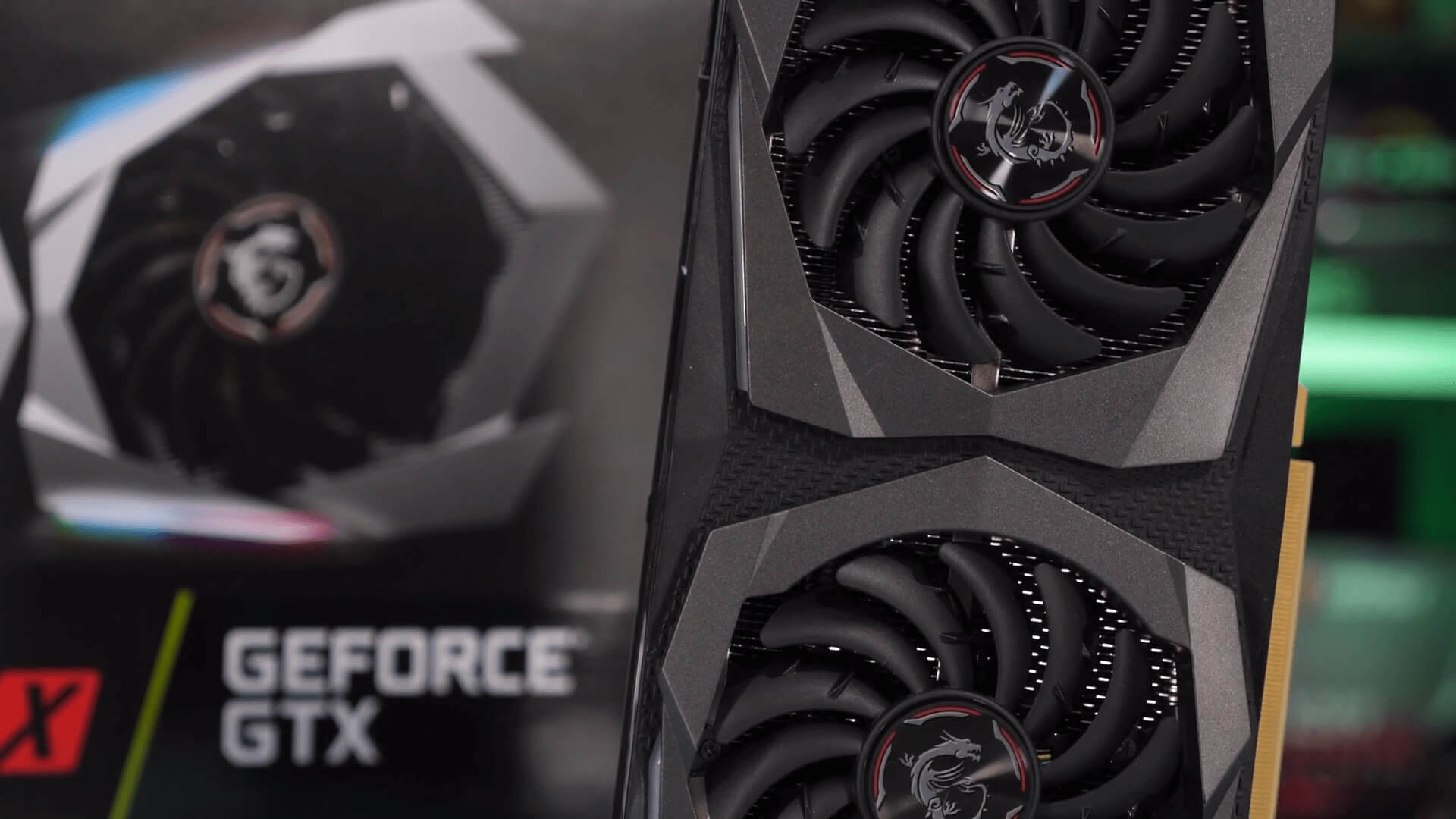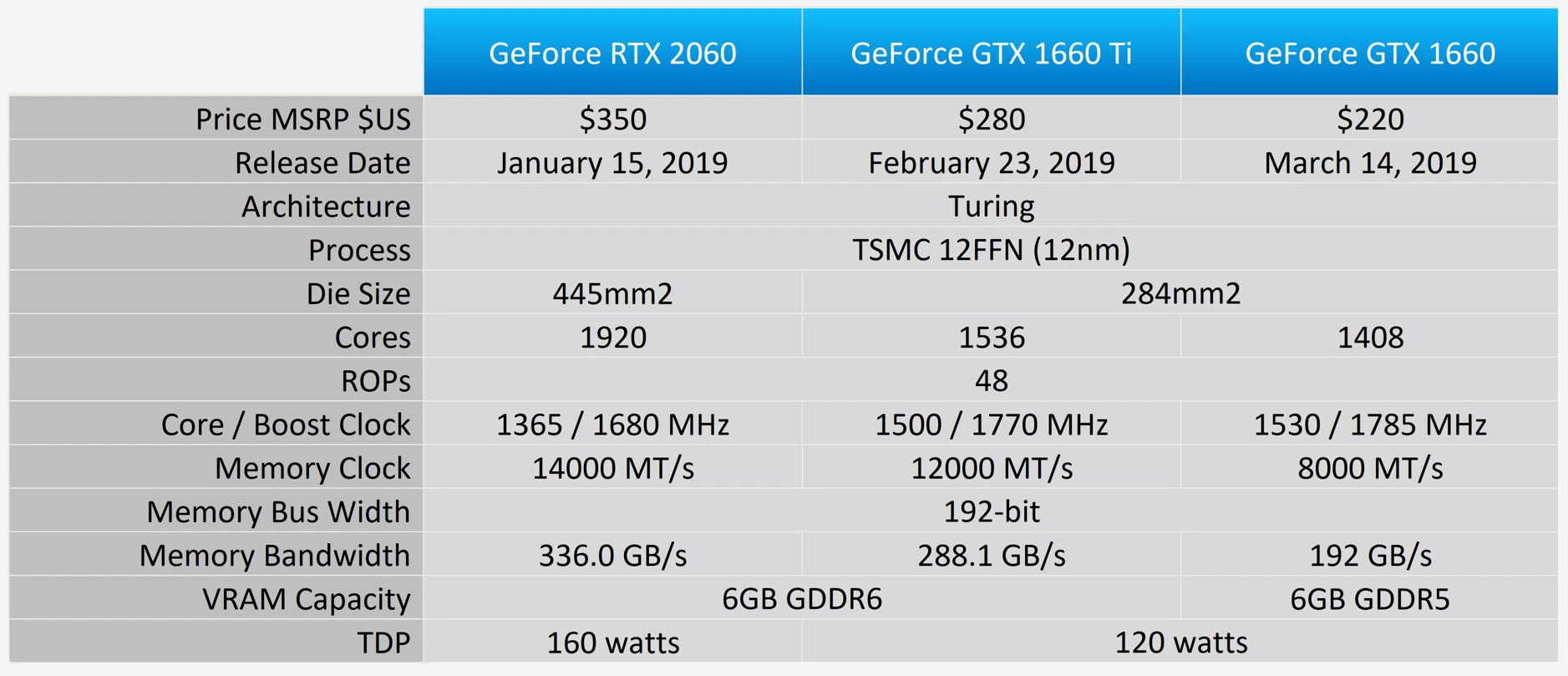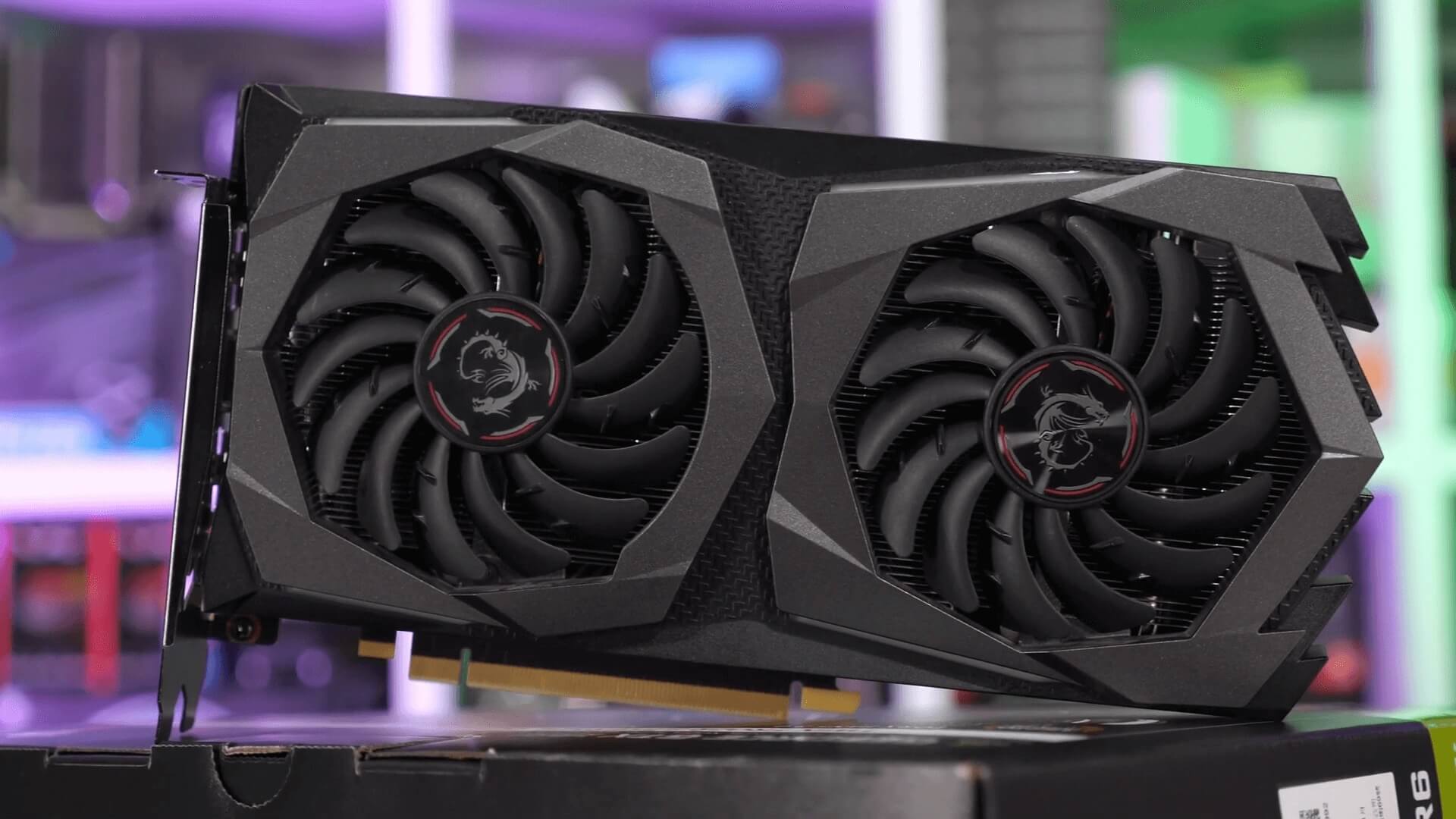The latest member of the Turing GTX family is making its debut in the form of the Nvidia GeForce GTX 1660. An anticipated release after the recent launch of the GTX 1660 Ti, at $280 this mid-range GPU proved to be a great buy. Now the vanilla GTX 1660 has been set at $220, and at least on paper it looks to provide great value for your money.
The standard 1660 is 21% cheaper but packs only 8% fewer CUDA cores. Going off by that alone you'd expect it to be ~5% slower on average, as the base and boost clocks are very similar. However, there's one other major change. Whereas the 1660 Ti features a 192-bit wide memory bus using 12Gbps GDDR6 memory for a bandwidth of 288 GB/s, the new vanilla model has been downgraded with GDDR5 memory.
It still sports a 192-bit memory bus, but the slower GDDR5 memory means the bandwidth has been reduced by 33% down to 192 GB/s. That's going to produce some interesting results and we don't expect the GTX 1660 and 1660 Ti to scale evenly.
Overall Nvidia says the GTX 1660 is 30% faster than the GTX 1060 3GB and 15% faster than the GTX 1060 6GB at 1080p, a claim we'll certainly put to the test today.
Nvidia also told us that on average the GTX 1660 is 68% faster than the GTX 970 and 113% faster than the GTX 960. Prospective upgrades for those coming from older GPUs is one of the primary targets at this price point. As long as you have an 8-pin PCIe power connector you're good to go, though you can get 4-pin molex adapters, too.
On hand for testing we have the MSI GTX 1660 Gaming X. This comes handy because our 1660 Ti results are based on the same MSI Gaming X model, and the same is true for the RTX 2060. Shout out to MSI for looking after us on these releases. Truth be told without their support this day-one content wouldn't be possible. On that same note, Nvidia has also been helpful with these recent Turing GTX releases, promptly providing the necessary drivers so we can get on with testing.
For this review we'll be looking at performance in a dozen gaming titles, then sometime next week we'll follow up with one of our mega benchmarks comprising over 30 games.
Before we begin, a few quick notes on our test system. We tested with a Core i9-9900K clocked at 5 GHz with 32GB of DDR4-3200 memory. We used using Adrenalin 2019 Edition 19.2.3 drivers for the Radeon GPUs and Game Ready 419.35 WHQL for the GeForce GPUs. Our focus will be on 1080p performance.
Benchmarks
Kickstarting the benchmarks we have Shadow of the Tomb Raider and here the new GTX 1660 performs exceptionally well. It blows the GTX 1060 6GB out of the water by almost 40% and it's just 4% slower than the GTX 1070 and 13% slower than the 1660 Ti.
Not only that, but with 76 fps on average at 1080p using the highest graphics settings, it provided a super smooth and enjoyable gaming experience. We're off to a good start.

The GTX 1660 isn't quite as impressive in Forza Horizon 4, where it matched the RX 590 and was only slightly slower than the GTX 1070. When compared to the GTX 1060 6GB it was 16% faster which is not bad, but not great either.
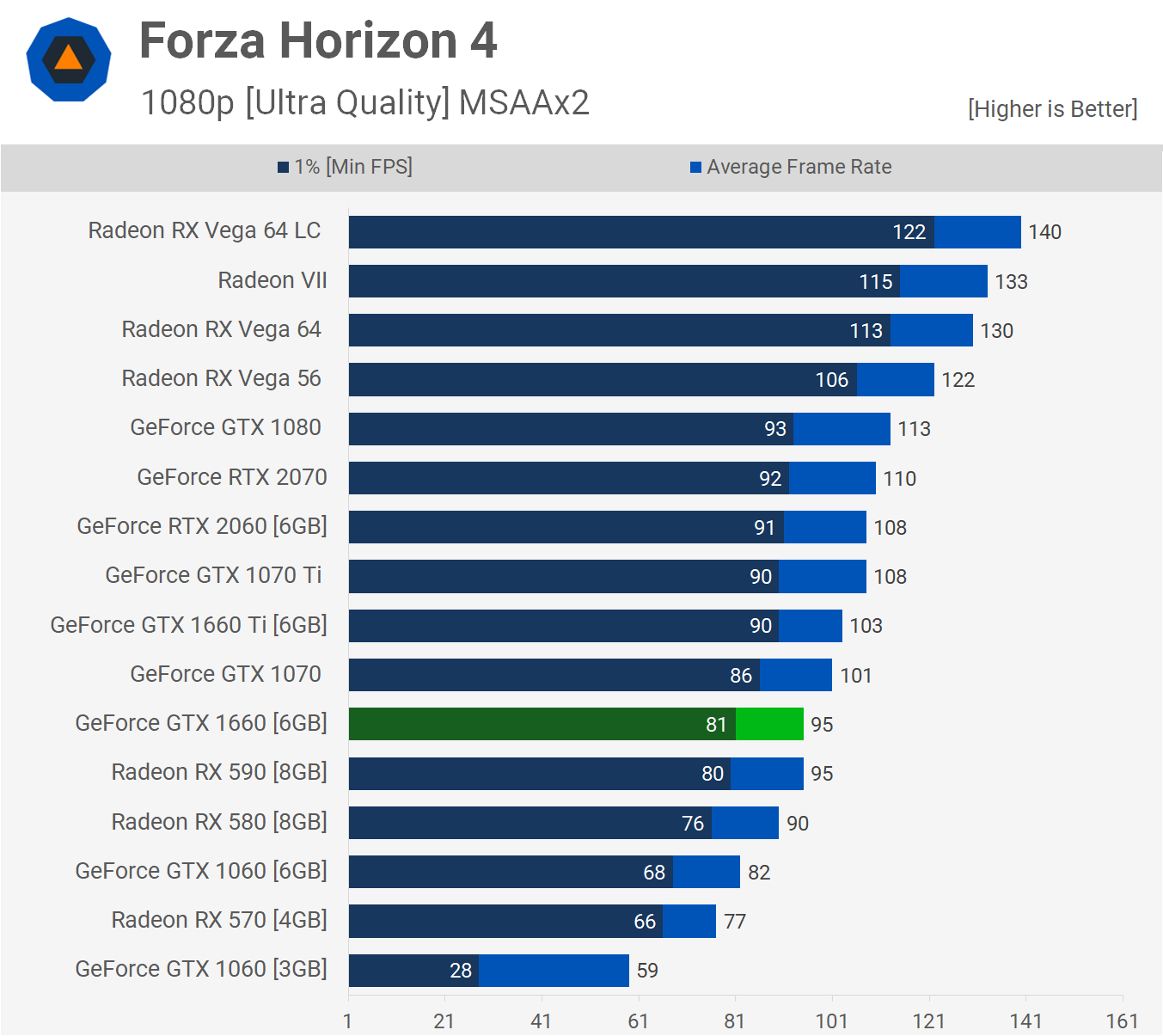
The GTX 1660 averages 65 fps in Just Cause 4 at 1080p, placing it roughly on par with the Radeon RX 590 and placing it 18% ahead than the GTX 1060 6GB in this title. It was ~11% slower than the 1660 Ti, so overall not a bad result.

Testing with Resident Evil 2 we find another title where the GTX 1660 is on par with the RX 590, though in this instance it is almost 30% faster than the GTX 1060 6GB, a substantial improvement.
At 94 fps on average at 1080p with the game maxed out, it's nothing to sneeze at.
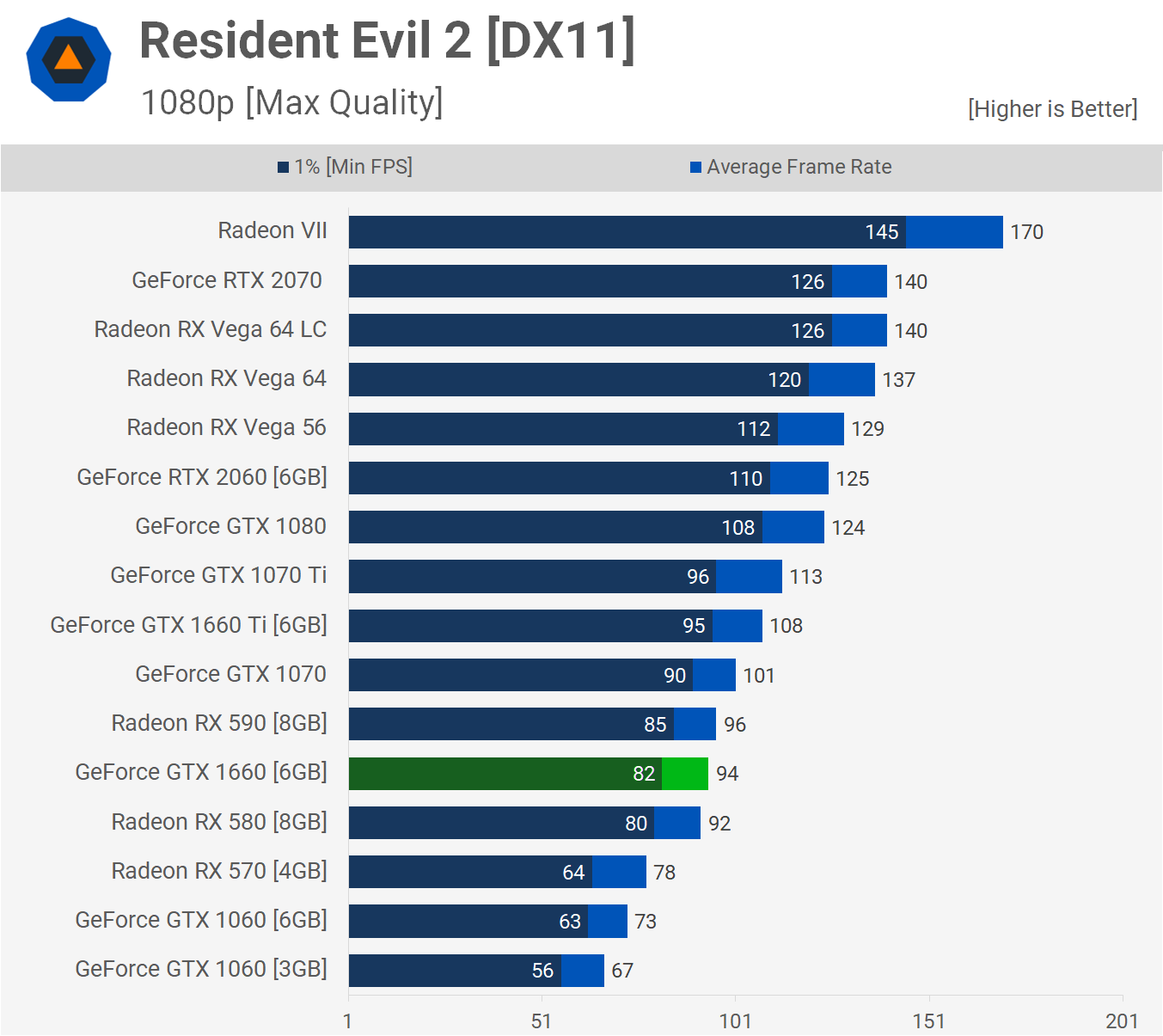
Hitman 2 is a CPU limited game at 1080p when using the GTX 1660 Ti or better. We see the 1660 isn't quite at the limits of the CPU but even so it's still 16% faster than the RX 590 and 29% faster than the GTX 1060 6GB. Hitman 2 is a somewhat odd title, but the 1660 performs well here regardless.

The GTX 1660 does OK in Fortnite, not amazing but it certainly gets the job done. It was 11% faster than the GTX 1060 6GB, 16% slower than the GTX 1070, and 18% slower than the GTX 1660 Ti. With 113 fps on average using the 'Epic' quality preset at 1080p, it's not what you'd call slow.

Performance in Metro Exodus is good, here the GTX 1660 was only 8% slower than the Ti model. It was 16% faster than the GTX 1060 and that meant the difference between nice smooth performance and noticeably lower frame rates.
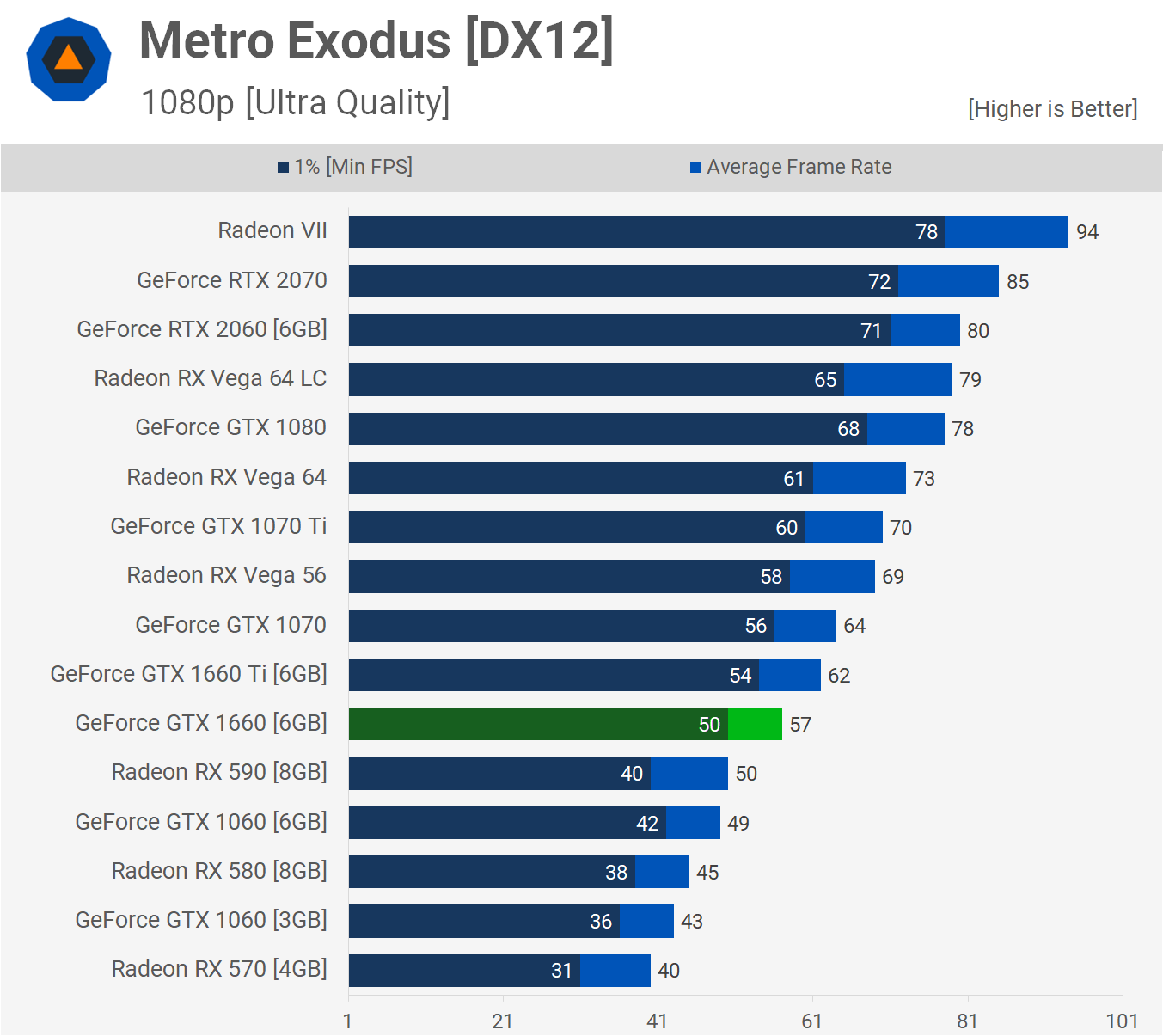
We've seen it before that Turing loves Rainbow Six Siege, or Rainbow Six Siege loves Turing. Either way, it's good news for prospective GTX 1660 owners. Here the new budget GPU spat out an incredible 118 fps on average at 1080p using 100% render scale. That's a whopping 36% performance boost over the GTX 1060 6GB.

Testing with Battlefield V sees the 1660 trailing the Ti model by a 16% margin, and it only managed to match the RX 580. Radeon GPUs do perform very well in this title. When compared to the GTX 1060 6GB we're looking at a smaller 12% performance uplift.
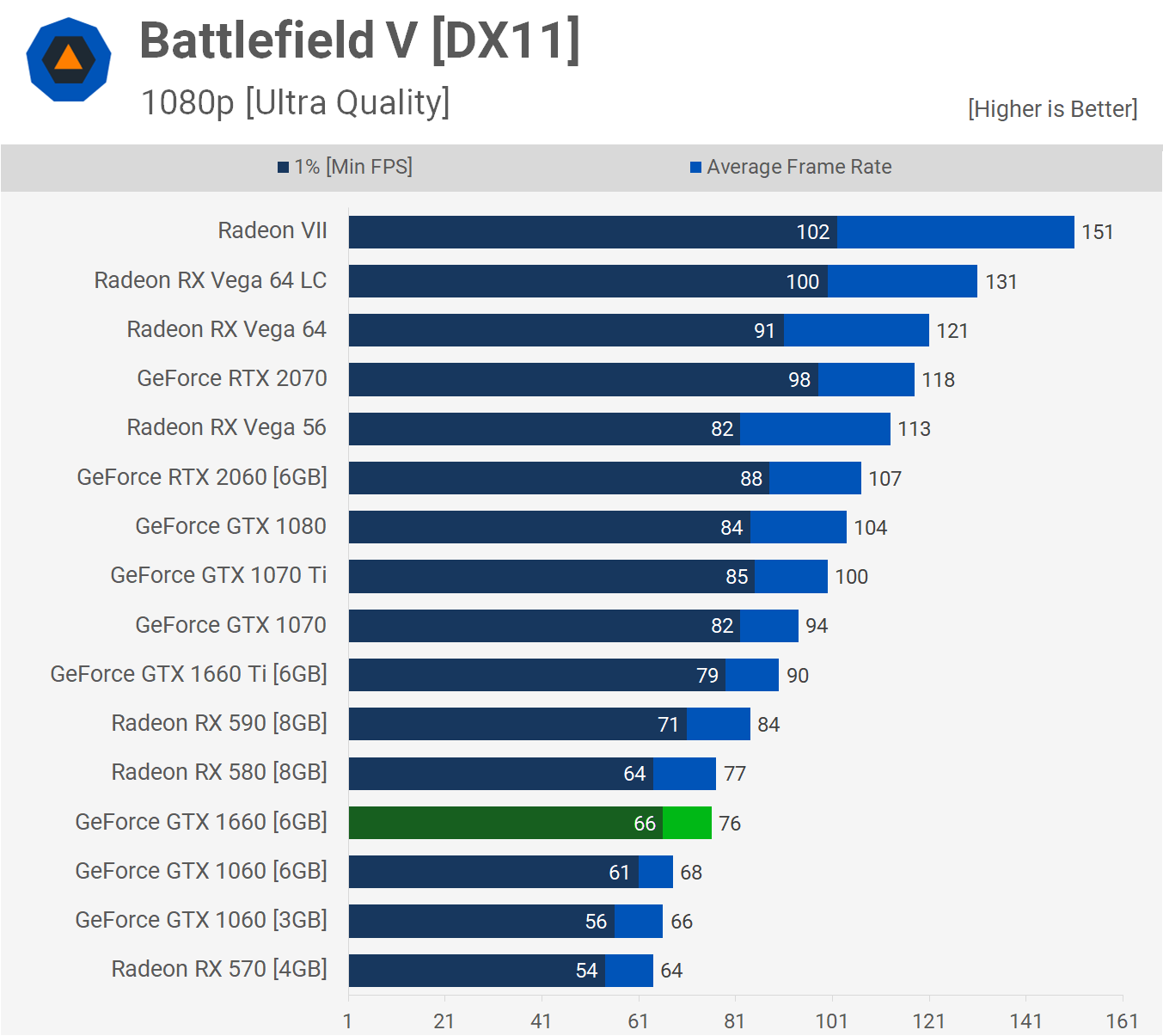
The new GPU doesn't do so well in World of Tanks. Here the 1660 is down 17% on the 1660 Ti, putting it essentially on par with the GTX 1060 6GB.
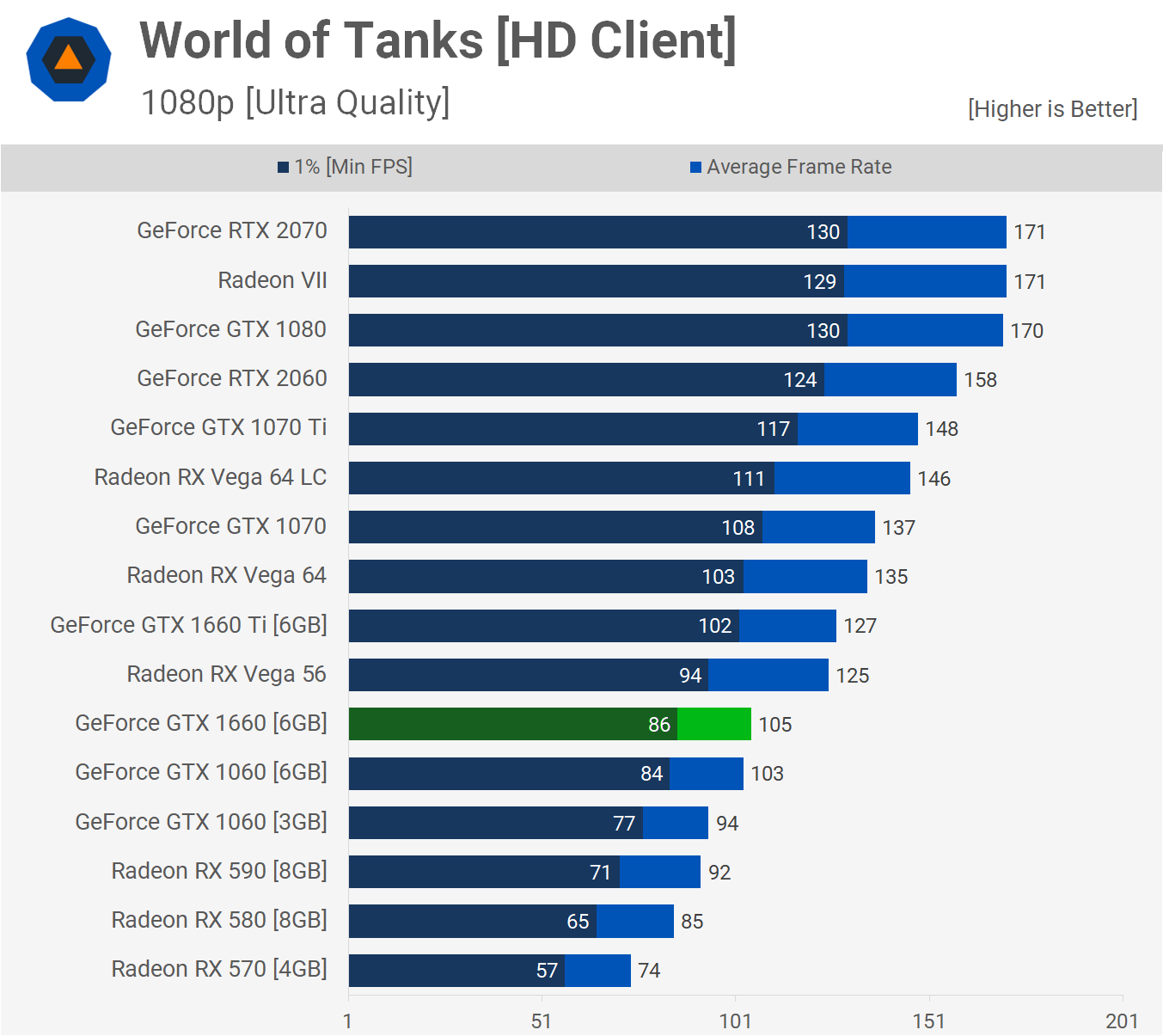
Testing with Apex Legends shows the GTX 1660 providing a nice 28% performance boost over the 1060 6GB with a noteworthy 106 fps on average at 1080p. The card was 6% slower than the GTX 1070 and 14% slower than the GTX 1660 Ti which are relatively narrow margins.
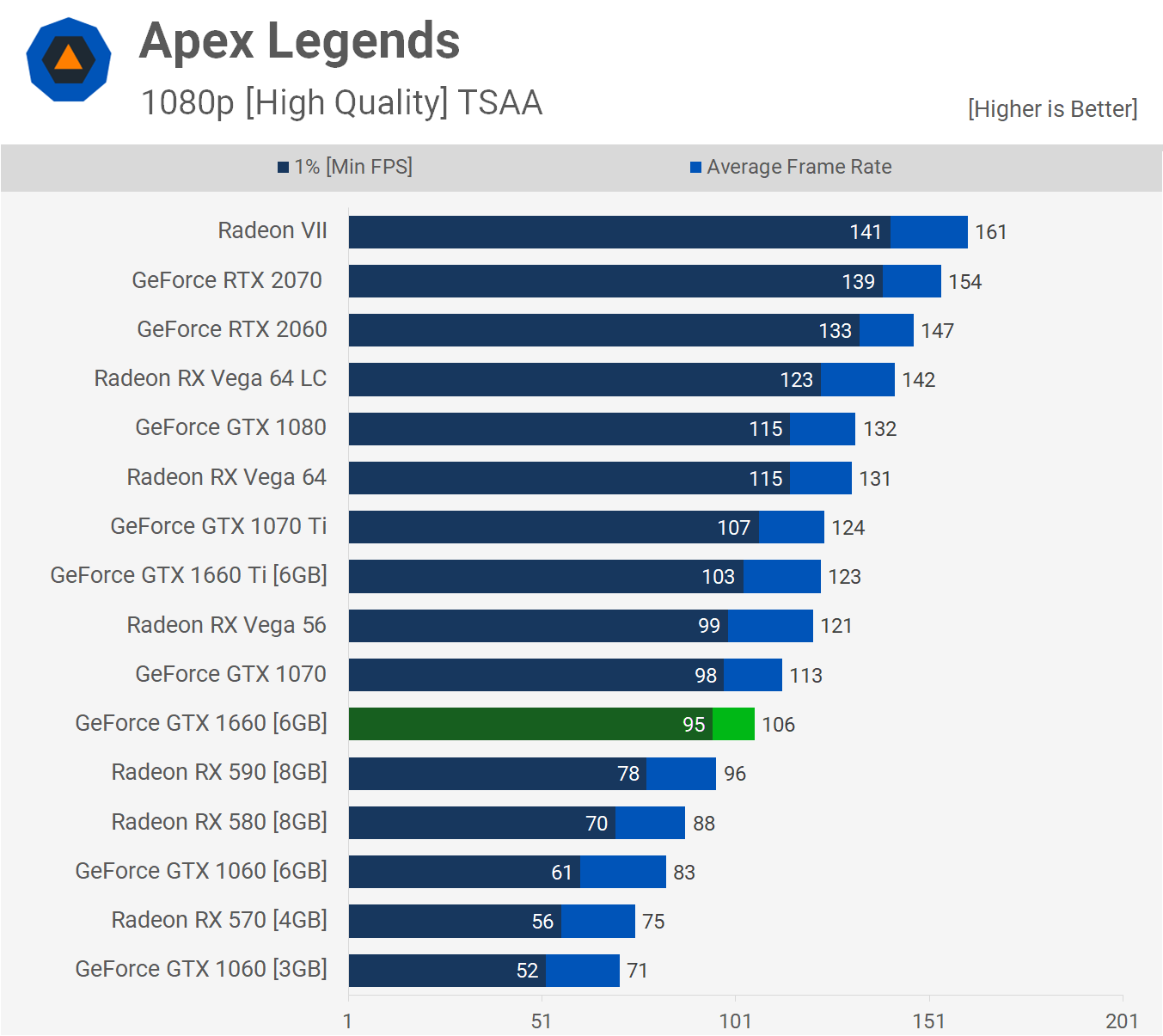
When testing with Far Cry New Dawn the GTX 1660 once again matched the RX 590. With 87 fps on average, performance at 1080p was excellent though admittedly it was just 14% faster than the 1060 6GB. The older Pascal GPU spit out 76 fps on average, so the difference wasn't that noticeable.

Power and Overclocking
When it comes to power consumption we can observe the new GTX 1660 is extremely fuel efficient, not unlike its Ti sibling. The card pushed total system consumption to the same levels as the already very efficient GTX 1060 6GB, doing so while delivering more performance. In terms of efficiency, there's no question about it, the GTX 1660 is excellent.
As for temperatures, the MSI GTX 1660 Gaming X ran cool and quiet. Under load we couldn't hear it above the test system and after an hour of the F1 2018 benchmark on a loop it peaked at just 63 degrees in a 21 degree room. Impressive stuff from this new budget graphics card.

Overclocking the MSI GTX 1660 Gaming X went smoothly. Firing up the MSI Afterburner utility we arrived at +110 for the core and +900 for the GDDR5 memory. This resulted in a typical operating clock speed of 2070 MHz, though that's a mere 5% bump over what you get out of the box.
By increasing the GDDR5 memory speed by 22% this helped to boost frame rates by 11% in Apex Legends. Not bad considering how small the core overclock was. Clearly the GTX 1660 is memory limited and squeezing the most you can out of the GDDR5 is an easy way to boost frame rates.

Cost per Frame and Closing Remarks
Overall Nvidia's new $220 mid-range Turing offering is an all-round excellent option. We can get a better idea of just how good the GTX 1660 in terms of value by looking at the cost per frame graph below. At a cost of $2.44 per frame based on our testing, it's actually 9% better value than the GTX 1660 Ti overall and impressively it even managed to edge out the Radeon RX 580.
This is a really good value offering from Nvidia that completely wipes out the GTX 1060 series along with the Radeon RX 580 and 590, though the GTX 1660 Ti has already taken good care of the never-good RX 590.
This leaves AMD's $140 RX 570 as the cost per frame champ, but as you can see the GTX 1660 was 36% faster on average, so paying a bit more for all that extra performance will likely be worth it for most.

Bang for your buck the GTX 1660 can't be beat. The power efficiency is there, and the MSI Gaming X model we used for testing worked like a charm, running cool and quiet with a reasonable amount of overclocking headroom on offer.
By the time you read this we hope enough cards show up in stores shortly afterwards, so if you're ready to take the plunge you can do so at the suggested $220 retail pricing.
Shopping Shortcuts:
- GeForce GTX 1660 on Amazon, Newegg
- GeForce GTX 1660 Ti on Amazon, Newegg
- GeForce RTX 2060 on Amazon, Newegg
- GeForce RTX 2080 on Amazon, Newegg
- GeForce RTX 2080 Ti on Amazon, Newegg
- Radeon RX Vega 56 on Amazon, Newegg
- Radeon RX Vega 64 on Amazon, Newegg
- Radeon RX 570 on Amazon, Newegg
- Radeon RX 580 on Amazon, Newegg
